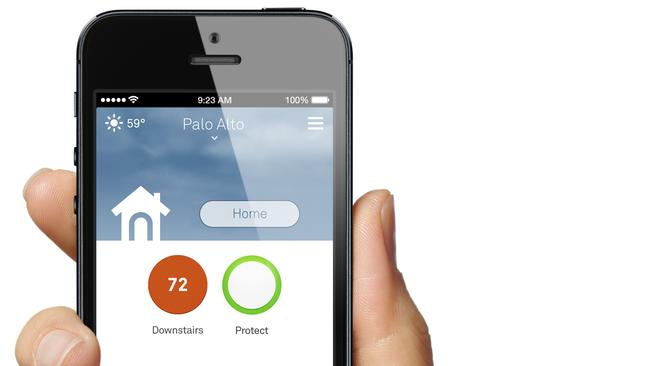Google’s Nest Labs opens platform to outside developers
GOOGLE’S Nest Labs is opening its platform to outside developers, a big step by the thermostat and smoke-detector maker.

GOOGLE’S Nest Labs is opening its platform to outside developers, a big step by the thermostat and smoke-detector maker to establish itself in a crowded market to be the operating system for internet-connected devices in the home.
Through Nest, users will be able to communicate with appliances from Whirlpool, cars from Daimler AG’s Mercedes-Benz, remote controls from Logitech International SA and other devices.
Google itself is a partner, allowing its personal digital assistant, Google Now, to set the temperature on a Nest thermostat automatically when it detects that a user is coming home.
Nest will share limited user information with Google and other partners, and people have to opt in for each new device, said Nest co-founder Matt Rogers.
Nest will let partners link their software and applications to Nest’s thermostat, which will act as a control and information hub for devices in and around the home, Mr Rogers said.
New Whirlpool washers and dryers will get alerts from Nest when homeowners leave, allowing them to switch to settings designed to ward off mould and wrinkles.
When homeowners go on vacation, Nest’s thermostat will alert start-up LIFX’s connected light bulbs which turn on and off automatically, to make it appear that someone is home.
Google and rivals are vying for control of the home, considered an important new digital frontier as computing becomes increasingly mobile and moves beyond smartphones into everyday objects and sensors.
By 2022, half of U.S. households with a broadband internet connection will own at least one smart home device, up from about 12 per cent currently, according to research firm Parks Associates.
That excludes connected TVs, set-top boxes and gaming consoles. Competitors include Apple Inc. which earlier this month unveiled HomeKit, a way for iPhone users to control lights, door locks and thermostat settings through the phone.
Start-up Quirky is launching Wink, which it hopes will become an operating system for home-connected devices.
Established home-security, cable and telecom providers such as ADT Corp., Alarm.com, Comcast and AT & T also are expanding their services to include control of connected home gadgets.
There is no “killer app” for the connected home yet, so established players in home security, such as Alarm.com, may have an advantage because they can explain how new features and devices may be useful to existing customers, said Tom Kerber, director of home controls and energy research at Parks Associates.
But Mr Kerber says less than a third of US households have a professionally monitored security service, leaving an opening for new entrants like Nest, Apple and Wink.
Rather than just making its own devices, Nest has a better chance of dominating this market by becoming an operating system that runs lots of different gadgets made by other companies.
Google used a similar approach with its Android mobile-operating system, which now runs the majority of the world’s smartphones.
“I don’t care how big your company is, you don’t have as big an army as the app development community,” said Mr Kerber. “Opening it up and allowing app developers to innovate for you allows the platform to be much more powerful.”
Nest said more than 5,000 developers expressed interest in working on its platform. It is launching an investment fund called the Thoughtful Things Fund with venture-capital firm Kleiner Perkins Caufield & Byers and Google Ventures, the venture-capital arm of Google, which will invest hundreds of thousands of dollars to millions of dollars in start-ups that develop on the company’s new platform.
On Friday, Nest agreed to buy Dropcam for $US555 million. The start-up sells an internet-connected video-monitoring service that streams live video to mobile apps, sends alerts based on activity that its small cameras sense and lets users communicate with people in their homes while they are away.
Other companies joining with Nest in launch of its operating system include wearable device start-up Jawbone; garage-door-opener maker Chamberlain Group, and IFTTT, a web application that automates tasks like posting to social media or sending emails.
Additional reporting by Rolfe Winkler.


